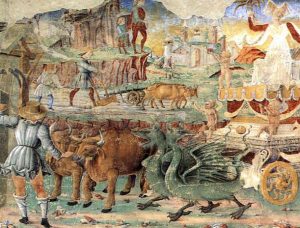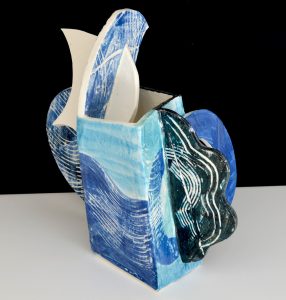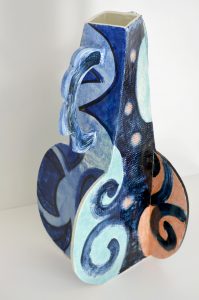Escape from Boredom
How has August been for you? Have the August weeks seemed long and interminable? Are you dreading the end of Summer or are you just looking forward to everybody getting back to work and school so that you can get on with things? We all want to avoid boredom – sky diving, snorkelling, eating ice cream, going abroad, or building a palazzo with allegorical frescoes as Duke Borso d’Este did in 1465.
belatrova was in Ferrara and paid the Palazzo Schifanoia a visit. The name “Schifanoia” is originates from “schivar la noia” meaning literally to “escape from boredom” which describes accurately the original intention of the Duke when he had the palazzo built.
The highlights of its decorations are the allegorical frescoes lining the Salone dei Mesi (Room of the Months). The Allegory of August (top image) mainly depicts the triumph of Ceres, Goddess of the Harvest, but there are other little everyday details too.
One of the reasons for the visit was the book by Ali Smith called How to Be Both, which has two interconnected stories, one centred on a teenage girl called George whose mother has just died and the other on the Italian renaissance artist, Francesco del Cossa, responsible for most of the frescoes in the Palazzo. It is an intriguing story and an unusual book, and it led us to the almost empty palazzo on a very hot day this month. A lot of the fresco is damaged beyond repair but what remains is surprisingly bright despite the deliberate gloom of the interior of the hall.
Part of the Italian genius seems to be based on their ability to take you unawares. So many apparently small and modest churches may spring a Giotto on you, a rectangular blur on a distant hill turns out to be medieval Assisi, you go to Venice and all you remember is the best Dry Martini ever, they drive fast on the road but they drive well, a memorable dish of meat and sage is, of course, called Saltimbocca (Jumps in the Mouth), the waiter who forgets to serve anybody because he wants you to tell him everything about Tate Modern, the Roman taxi driver who pines for Manchester.
A surprise around every corner then, something available to suit any mood. Do you see where I am going?
By now you must know of belatrova’s great love of the sublime playing of Thelonius Monk and his piano (see July’s blog), of his ability to hit the right “wrong” note at an unexpected moment yet leave you wanting more – a saltimbocca note.
And so from Italian culture to jazz to ceramics: belatrova’s Thelonius series of one-off pots which we introduced to you recently continues to develop, and we are open throughout hArt for you to come and see it. We will also be selling our ceramic and oak birdbaths, our ceramic lamps, our three legged bowls and large undulating fruit bowls.
h.Art Week 2016 will take place from 10th to 18th September and we will be open 10 – 5.30 daily. Come and visit us at work in the studio. There will be some great bargains to be had at our belatrova studio clearance.
There is a surprise for everybody at belatrova, the Schifanoia of the ceramic world.
Cheers!

Toasting Assisi (in the distance)








































































































